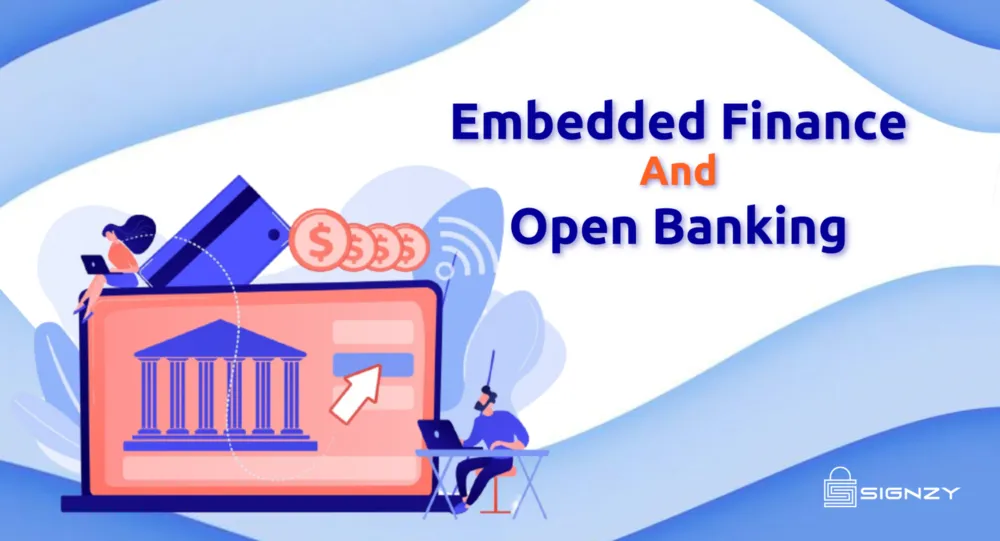Open banking has offered fintech startups the chance to alter the global finance industry by putting financial services at consumers’ fingertips through user-friendly apps and websites on their smartphones and PCs. Last year alone, 2.5 million people were using services that sat on open banking interfaces. This year it’s expected to be more than four million.
The open banking mandate requires banks to share data via application programming interfaces (APIs), making it one of the most significant disruptions to traditional banking in our era. As a result, fintech startups that have been approved can connect to people’s accounts and provide them with a variety of services. In addition, banks no longer possess exclusive rights to data management.
The European Parliament passed the updated Payment Services Directive (PSD2) to support open banking in October 2015. Open banking, which is already well-established and gaining popularity worldwide, has aided in the growth of embedded finance, but is this a risk-free strategy to improve the customer experience?
Embedded finance
Embedded finance can energize marketplaces, increase sales, and simplify consumers’ lives. Financial services and fintech are about quick access, simplicity, transparency, affordability, and being able to please your consumers. But unfortunately, because finance is ingrained in everything we do, it is becoming invisible.
Fundamentally, embedded finance incorporates financial services within a non-financial company’s product, such as lending or payment processing. Embedded finance can come in various shapes, including embedded credit, payment, and insurance.
By 2025, embedded finance, according to Lightyear Capital, could generate $230 billion in net new revenue. According to them, the change will be advantageous to businesses that have a “digital mindset” and can take advantage of chances in other financial innovation-related fields.
All Tesla customers who purchase a Tesla have inbuilt insurance, allowing them to drive their new car out of the dealership fully covered and without any additional paperwork. In addition, Uber provides embedded payment, allowing users to access their bank information (with their permission) so they don’t have to enter their credit card information each time they book a ride.
Embedded financing, often known as embedded credit, enables customers to purchase now and pay later (BNPL). Swedish finance business Klarna is a market leader in offering this type of embedded credit. With its “pay-in-four” plan, available in some regions of Europe and the USA, Klarna offers short-term, point-of-sale loans for purchases across its portfolio of shops. This allows customers to divide their balance into four installments to be paid every two weeks.
Risks and benefits
Businesses like Klarna help their registered retailers increase sales by dividing payments over time while easing the financial burden on consumers. With its “pay in four” financing scheme, Klarna doesn’t impose interest. However, late payments cost users money. Some of Klarna’s retailers offer more extended repayment arrangements. Retailer-specific interest rates might be up to 25%. Even more, it is charged by some BNPL service providers.
Fintech startups, dubbed “digital loan sharks” in some regions of the world, have drawn attention for charging high-interest rates and using abusive collection practices, prompting more robust controls.
Although any consumer can go into debt, those most at risk are frequently people who live in developing nations, are in extreme need, and have little access to conventional banks. Users of BNPL services run the same risk of identity fraud as users of any data-sharing program. However, banks and fintech startups have demonstrated they can work together to produce a secure and advantageous retail experience for customers when adequately regulated.
The CEO of venture capital firm Dubai Future District Fund, Sharif El-Badawi, is upbeat about the prospects for fintech startups. When the cooperation is at its best, “banks meeting halfway with these startups is truly delivering us—as consumers and businesses—the most value,” says El-Badawi. As a result, we get the security and safety of a bank. Additionally, we get the user experience, as well as bells and whistles, from the startup. “I think the wonderful moment for us as consumers is the extensibility of those two functions together.”
The Bottom line
Fintech startups are not going to topple the titan banks overnight. But their threat can certainly not be ignored. As a matter of fact, it should not be perceived as a threat but as an opportunity. This is a sign for all conventional giants to revamp their processes and evolve.
It is time to adopt the digital evolution. Fintechs understand this. So should banks. For this, you will need reliable resources and dependable service providers. That’s precisely what we at signzy emphasize. Check out Signzy’s API Marketplace for more.
About Signzy
Signzy is a market-leading platform redefining the speed, accuracy, and experience of how financial institutions are onboarding customers and businesses – using the digital medium. The company’s award-winning no-code GO platform delivers seamless, end-to-end, and multi-channel onboarding journeys while offering customizable workflows. In addition, it gives these players access to an aggregated marketplace of 240+ bespoke APIs that can be easily added to any workflow with simple widgets.
Signzy is enabling ten million+ end customer and business onboarding every month at a success rate of 99% while reducing the speed to market from 6 months to 3-4 weeks. It works with over 240+ FIs globally, including the 4 largest banks in India, a Top 3 acquiring Bank in the US, and has a robust global partnership with Mastercard and Microsoft. The company’s product team is based out of Bengaluru and has a strong presence in Mumbai, New York, and Dubai.
Visit www.signzy.com for more information about us.
You can reach out to our team at reachout@signzy.com.
Written By:

Signzy
Written by an insightful Signzian intent on learning and sharing knowledge.



